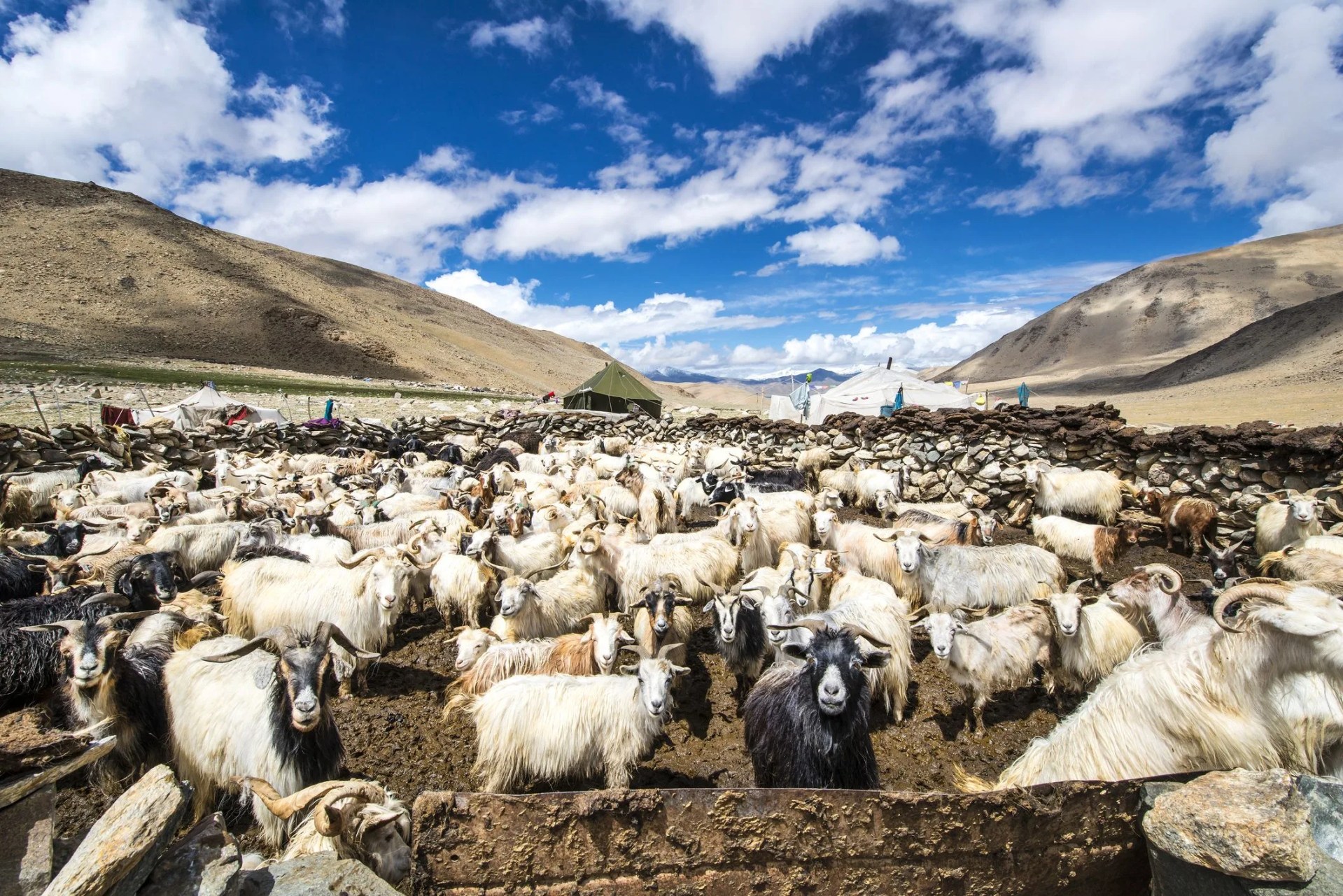Cashmere has always been tied to exclusivity and luxury. But new cashmere garments that are both accessible and affordable upend the conventional wisdom. So, to get a better grasp on the actual value of the fiber, we talked with Jeffrey Silberman, the chairperson of the Textile Development and Marketing Department at Fashion Institute of Technology in New York City. Read more about the mysterious (and mega-soft) material below.
And if you’re shopping for a cashmere sweater, explore our guide to cashmere sweaters at every budget.
What Is Cashmere?
Cashmere is an incredibly soft and very warm animal fiber, and it’s not as abundant as other animal fibers, like sheep’s wool. Cashmere is shorn from the undercoat of cashmere (Kashmir) goats when they enter molting season.
 guenterguni
guenterguniBecause cashmere is shorn from the undercoat, the yield per goat is small, requiring two cashmere goats to produce a single sweater. The wool produced by these special goats results in an extremely fine fiber with about the same thickness of ultrafine merino and a considerable jump in price.
Why Does Cashmere Cost So Much?
According to Silberman, there are a number of aspects that affect the quality of the fiber — and in turn, the price. There are many different grades of cashmere and four primary types: black, brown, red and white. “The darker the cashmere is when it starts out, the less rare it is,” he said. “But it’s considered lower cashmere in the cashmere markets because it does have to be bleached and that’s where you get the fiber damage.”
Along with the grade, the fineness of the fiber has a significant effect on the price. According to the U.S. Wool Products Labeling Act of 1939, the average diameter of cashmere fibers in a knit product should not exceed 19 microns, and it should not contain more than three percent of fibers that exceed 30 microns. Generally, the finer the fiber, the higher the price. But, the best cashmere fibers also display a superior quality overall. “[The fibers] are going to be smoother, they’re going to be more lustrous and they’re going to be stronger in the more expensive cashmere,” Silberman said.
Companies offering affordable cashmere sweaters often utilize fibers that aren’t the highest grade and don’t disclose the details of the material they use. “Where you’ll see the difference is if you have beautiful long-fiber cashmere,” said Silberman. “It’s going to feel better, it’s going to look better and it’s going to clean better because it’s not going to lint out fibers. The shorter, coarser cashmere is going to lend itself to the cheaper products.” For apparel companies, shorter cashmere is cheaper to buy, cheaper to process and still allows for the “100% Cashmere” label. Few companies offering affordable cashmere, save Everlane, actually reveal the staple length of fibers used in the yarns of the sweaters.


